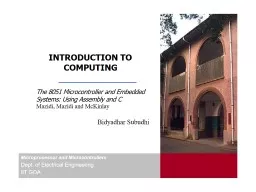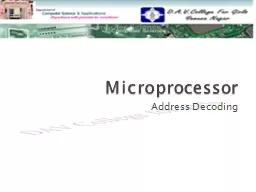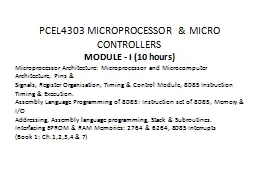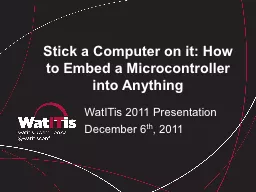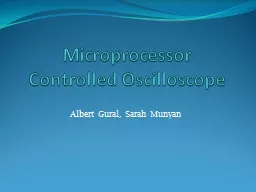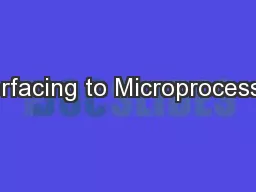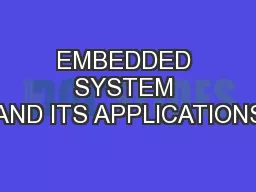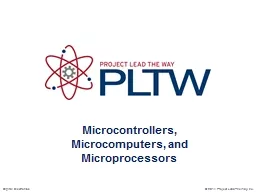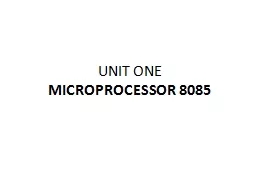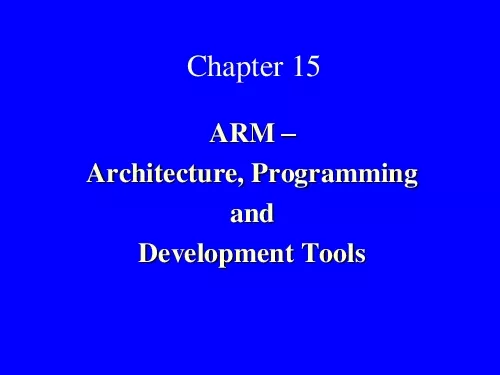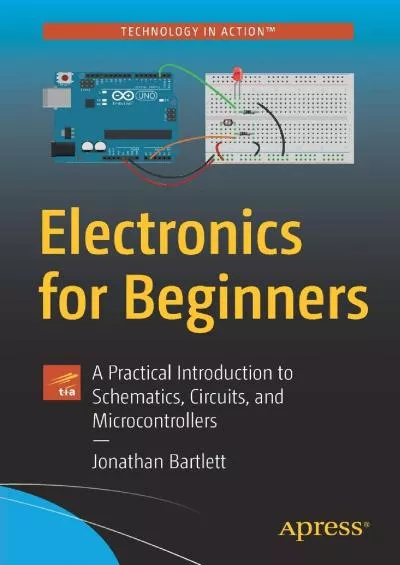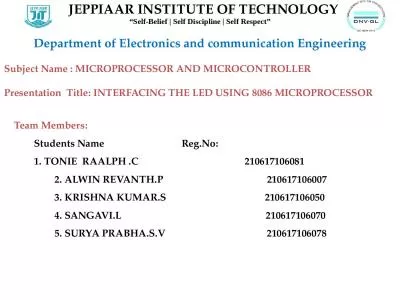PPT-Microprocessor and Microcontrollers
Author : taxiheineken | Published Date : 2020-08-06
Dept Of Electrical Engineering IIT Goa The 8051 Microcontroller and Embedded Systems Using Assembly and C Mazidi Mazidi and McKinlay Prof Bidyadhar Subudhi
Presentation Embed Code
Download Presentation
Download Presentation The PPT/PDF document "Microprocessor and Microcontrollers" is the property of its rightful owner. Permission is granted to download and print the materials on this website for personal, non-commercial use only, and to display it on your personal computer provided you do not modify the materials and that you retain all copyright notices contained in the materials. By downloading content from our website, you accept the terms of this agreement.
Microprocessor and Microcontrollers: Transcript
Download Rules Of Document
"Microprocessor and Microcontrollers"The content belongs to its owner. You may download and print it for personal use, without modification, and keep all copyright notices. By downloading, you agree to these terms.
Related Documents

